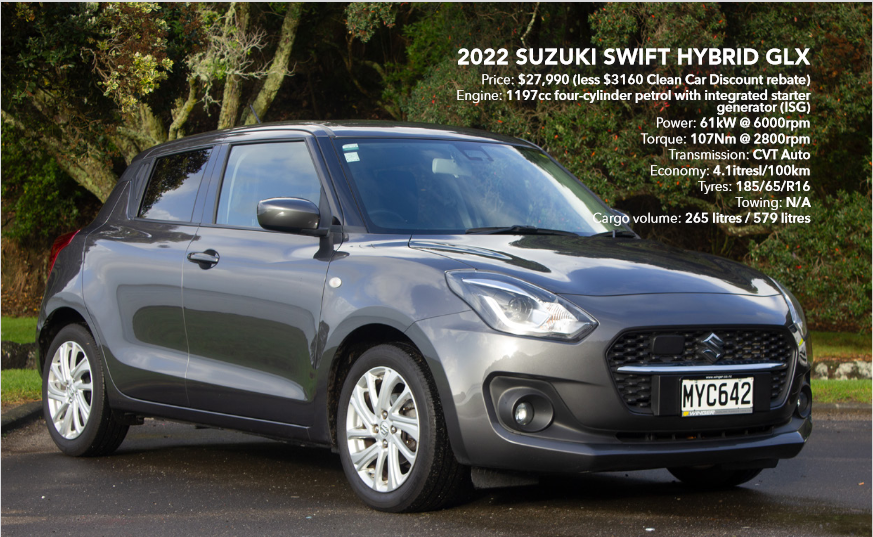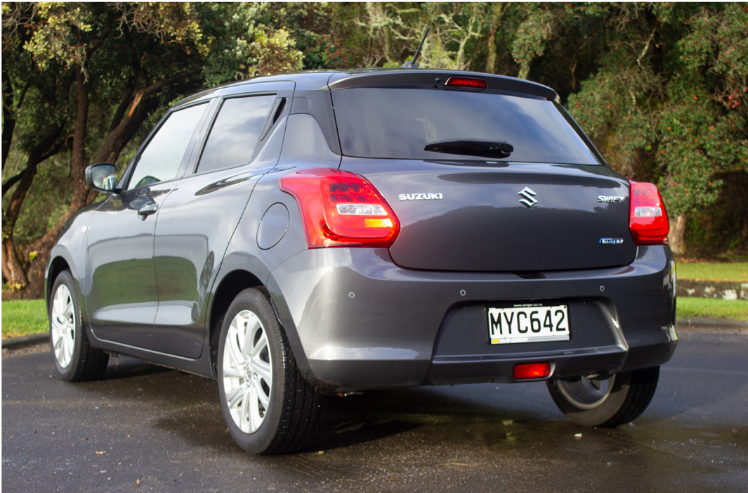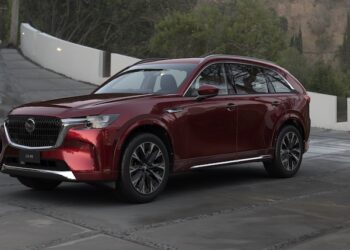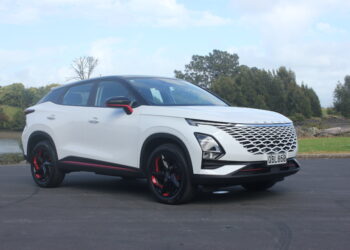
When Suzuki New Zealand introduced the Swift Hybrid in July 2020, the Whanganui- based distributor said it believed the mild hybrid hatch would account for more than 30% of sales or around 750 units a year.
It was touted then as New Zealand’s cheapest new hybrid, undercutting the Toyota Yaris Hybrid by a considerable margin.
Suzuki’s automotive marketing general manager Gary Collins reckoned that 50% of mild hybrid Swift sales would go to fleet buyers while non-hybrid versions sold to private buyers, female owners, and younger people.
Collins said Suzuki NZ had little experience of marketing hybrids, saying it was unknown territory, and that the estimate of 750 units was conservative.
But he admitted the brand had underestimated the initial interest shown in the cars.
Fast forward to April 2022 and the Government’s Clean Car Discount (CCD) programme puts Suzuki in the enviable position of being able to offer five Swift models that qualify for a rebate, with the GLX and Limited grade hybrids attracting a $3160.52 discount.
Given the Swift Hybrid GLX retails from $27,990, and the Swift Hybrid Limited from $29,990, and both models offer quoted combined fuel consumption of 4.1 litres/100km, the Suzuki makes a compelling proposition for a fleet seeking value and a reduced carbon footprint.
By comparison the $23,990 Swift 1.2-litre GL auto (CCD Rebate $2335) has a fuel consumption figure of 4.6 litres/100km and the $28,500 Swift 1.0-litre RS Turbo (CCD Rebate $1820) has a fuel consumption figure of 5.1l/100km.
THE TECH
Under the bonnet the Swift Hybrid’s unique Dual Jet 1.2-litre four-cylinder petrol engine develops 61kW of power and 107Nm of peak torque.
The Dual Jet is a completely different unit to the 66kW/120Nm 1.2-litre found in the Swift GL and requires a minimum of 95 Octane petrol.
The petrol engine is matched with an integrated starter generator (ISG), instead of an alternator, further combined with a 10Ah lithium ion battery which weighs 25kg and is mounted under the front passenger seat.
Partnered with the petrol engine the ISG and the 10Ah Li-ion battery pack add a further 50Nm of torque at lower driving speed which smooths out performance and improves fuel efficiency.
Suzuki says the mild hybrid system reduces CO2 emissions to 84g/km, hence the hefty current CCD rebate.
THE SPEC
Mild hybrid Swifts are built in Japan to European specifications and came to New Zealand market when the CVT automatic gearbox became available. Previously it had been manual only.
Further European specification peculiarities of the Swift Hybrid include wind up rear windows, and the indicator stalk is on the “wrong” side of the steering wheel.
The car’s Bosch infotainment system is geared for European mapping so NZ cars don’t get satellite navigation as a standard fit.
However, the 7.5-inch touch screen system is compatible with Apple CarPlay and Android Auto, so drivers can plug in their own choice of mapping apps through their cellphones.
The air conditioning is controlled manually, but that aside the levels of equipment in the GLX are fairly generous for a sub $30k car.
SAFETY
The GLX’s safety equipment includes a reversing camera, radar brake support, adaptive cruise control, LED daytime running lights, seven airbags, tyre pressure monitoring system, hill hold control, and heated exterior mirrors.
The additional $2000 for the Limited adds lane departure warning and prevention, exterior mirror blind spot indicators, rear parking sensors, and rear cross traffic alert.
Both Swift Hybrids have a Euro NCAP five-star safety rating.
THE DRIVE
Because the Swift is a mild hybrid and can’t run purely on battery power it feels like a more cohesive drive than a regular petrol-electric hybrids which often shunt from one mode to another.
Driven gently in the urban jungle the hybrid powerplant feels quite smooth and strong, but when more performance is required, the lack of engine grunt further up the rev range starts to show and the CVT auto sounds frenetic. Show it a steep grade and it gets quite noisy in the cabin.
But that’s the trade-off for a fuel- efficient vehicle that can cover 976km on a tank of fuel, as opposed to the Swift 1.2 GL Auto (833km) and the Swift 1.0 RS Auto (784km).
Thankfully the other virtues of the Swift remain in the Hybrid versions. They’re nimble, characterful, practical, comfortable, functional, but just not overly endowed with power.
Its compact dimensions make parking easy and finding space in congested traffic. It offers very good handling and road holding, responsive steering and braking and it’s a very friendly car to live with day to day.
OUR VIEW
It’s the perfect pool fleet car for multiple drivers. The Swift is somewhat of a Tardis, with a compact footprint that hides a surprisingly spacious interior which is comfortable for a wide variety of people.
As fuel prices continue to rise, we can see the Swift Hybrid becoming the fleet car of choice for high mileage urban operations.
You often see Swifts driven by courier drivers, security guards, and parking enforcement officers, but we believe it has much to offer to fleets used by health boards, district nursing services, local councils and government departments.
The cheaper running costs and the generous CCD rebate will be attractive to fleets which must be accountable for every dollar spent.









